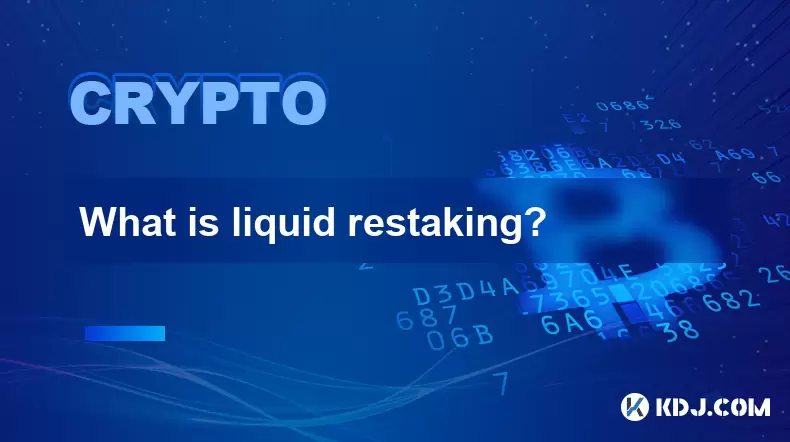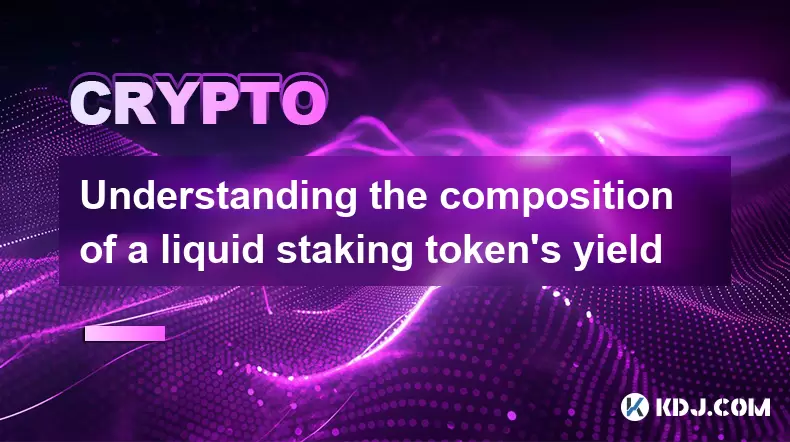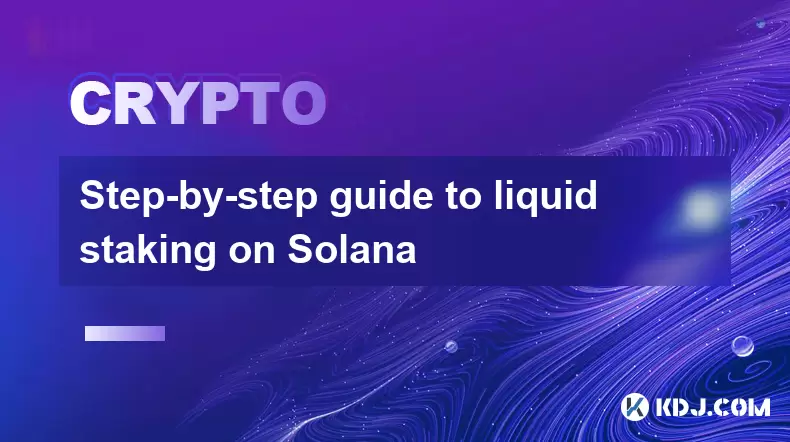-
 Bitcoin
Bitcoin $119300
1.07% -
 Ethereum
Ethereum $3730
3.87% -
 XRP
XRP $3.235
0.29% -
 Tether USDt
Tether USDt $1.000
0.00% -
 BNB
BNB $783.5
1.88% -
 Solana
Solana $188.7
0.25% -
 USDC
USDC $0.0000
-0.01% -
 Dogecoin
Dogecoin $0.2399
-0.44% -
 TRON
TRON $0.3157
2.37% -
 Cardano
Cardano $0.8254
1.94% -
 Hyperliquid
Hyperliquid $42.83
0.14% -
 Stellar
Stellar $0.4372
3.21% -
 Sui
Sui $3.859
4.91% -
 Chainlink
Chainlink $18.53
3.53% -
 Hedera
Hedera $0.2464
0.01% -
 Bitcoin Cash
Bitcoin Cash $519.8
2.46% -
 Avalanche
Avalanche $24.24
2.17% -
 Litecoin
Litecoin $113.7
0.73% -
 UNUS SED LEO
UNUS SED LEO $8.990
0.30% -
 Shiba Inu
Shiba Inu $0.00001390
0.21% -
 Toncoin
Toncoin $3.188
1.49% -
 Ethena USDe
Ethena USDe $1.001
0.02% -
 Polkadot
Polkadot $4.090
-0.91% -
 Uniswap
Uniswap $10.40
4.08% -
 Monero
Monero $326.6
3.12% -
 Bitget Token
Bitget Token $4.627
-0.42% -
 Pepe
Pepe $0.00001281
0.76% -
 Dai
Dai $1.000
0.01% -
 Aave
Aave $291.6
0.98% -
 Cronos
Cronos $0.1269
7.26%
What is liquid restaking?
Liquid restaking allows users to earn additional yield on staked assets by using tokenized derivatives like stETH in DeFi protocols, enhancing capital efficiency without sacrificing original staking rewards.
Jul 21, 2025 at 05:00 am

Understanding the Basics of Liquid Restaking
Liquid restaking is a concept that has gained traction within the decentralized finance (DeFi) and Proof-of-Stake (PoS) blockchain ecosystems. It refers to the process of staking already-staked assets in a liquid form to earn additional yield or participate in other protocols without sacrificing the original staking rewards. In traditional staking, when users lock up their tokens, they typically cannot use those assets elsewhere. However, liquid restaking introduces a mechanism where users receive a tokenized representation of their staked assets, which can then be utilized in other DeFi protocols.
This innovation allows users to maximize capital efficiency by engaging in multiple yield-generating activities simultaneously. For example, if a user stakes ETH on a platform like Lido, they receive stETH, a liquid token representing their staked ETH. They can then deposit this stETH into a lending protocol or provide liquidity in a decentralized exchange (DEX), thereby earning interest or liquidity provider (LP) rewards.
How Does Liquid Restaking Work?
The mechanism of liquid restaking relies heavily on tokenized staking derivatives. When a user stakes their native token (e.g., ETH, ATOM, SOL), they typically receive a derivative token (e.g., stETH, stATOM, stSOL) that represents their staked asset. These tokens can be freely traded or used in other DeFi applications.
Here’s a breakdown of the process:
- Staking the native token: Users deposit their native token into a staking protocol.
- Receiving a liquid derivative token: The protocol issues a token that mirrors the staked asset and accrues rewards over time.
- Using the derivative token in DeFi: Users can now deposit this token into lending platforms, swap them on DEXs, or use them as collateral in various DeFi protocols.
- Earning additional yield: By deploying the derivative token, users generate extra income while still earning staking rewards on the original asset.
This dual-income model is the core advantage of liquid restaking, making it a popular strategy among yield farmers and DeFi enthusiasts.
Protocols and Platforms Supporting Liquid Restaking
Several leading DeFi protocols and staking platforms have embraced the concept of liquid restaking by integrating tokenized staking derivatives into their systems. Some of the most notable platforms include:
- Lido Finance: Allows users to stake ETH and receive stETH, which can be used across various DeFi protocols.
- Rocket Pool: Offers rETH as a liquid staking token for Ethereum stakers.
- Stakewise: Provides sETH2 tokens that represent staked ETH and can be used in DeFi.
- Stride: A liquid staking platform for the Cosmos ecosystem, offering stATOM and other staked tokens.
- Marinade Finance: For Solana users, offering mSOL as a liquid staking token.
These platforms not only enable secure staking but also facilitate interoperability with other DeFi applications, enhancing the utility of staked assets.
Benefits of Liquid Restaking
The appeal of liquid restaking lies in its ability to offer multiple revenue streams from a single asset. Some of the key benefits include:
- Capital Efficiency: Instead of letting staked assets sit idle, users can deploy them in other protocols to earn more yield.
- Flexibility: Liquid staking derivatives can be traded or used as collateral, providing liquidity without unstaking.
- Risk Diversification: By engaging in different DeFi activities, users spread their risk across various protocols.
- No Lock-up Period: Unlike traditional staking, where assets may be locked for extended periods, liquid restaking derivatives can be used instantly.
- Continuous Staking Rewards: Even while using derivative tokens elsewhere, users continue to earn staking rewards on their original assets.
These advantages make liquid restaking a compelling option for both novice and advanced DeFi participants.
Potential Risks and Considerations
While liquid restaking offers significant opportunities, it also comes with certain risks and considerations that users should be aware of:
- Smart Contract Risk: Since most liquid restaking platforms rely on complex smart contracts, there’s always a risk of bugs or exploits.
- Impermanent Loss: If users provide liquidity with their staked derivative tokens, they may face impermanent loss depending on market conditions.
- Slashing Risk: In some PoS systems, if the validator is penalized, it can affect the value of the derivative token.
- Market Volatility: Derivative tokens may trade at a discount or premium relative to the underlying asset, especially during volatile periods.
- Regulatory Uncertainty: As with many DeFi innovations, regulatory scrutiny is a potential risk, especially in jurisdictions with evolving crypto laws.
Users should conduct thorough due diligence before participating in liquid restaking, including reviewing the platform’s security audits, reputation, and historical performance.
Step-by-Step Guide to Participating in Liquid Restaking
For those interested in engaging in liquid restaking, here’s a detailed guide:
- Choose a Staking Platform: Select a reputable platform that offers liquid staking derivatives for your preferred blockchain (e.g., Lido for Ethereum, Stride for Cosmos).
- Connect Your Wallet: Use a compatible wallet like MetaMask, Keplr, or Phantom to interact with the platform.
- Deposit Native Tokens: Send your native tokens (e.g., ETH, ATOM) to the platform’s staking contract.
- Receive Derivative Tokens: Once the transaction is confirmed, you’ll receive the corresponding liquid token (e.g., stETH, stATOM).
- Deposit Derivative Tokens into DeFi Protocols: Navigate to a DeFi platform like Aave, Curve, or Balancer and deposit your derivative tokens to earn yield.
- Monitor and Manage Positions: Regularly check your positions for impermanent loss, interest rates, and overall performance.
By following these steps, users can safely and effectively engage in liquid restaking while optimizing their DeFi strategies.
Frequently Asked Questions
Q: Can I unstake my assets at any time with liquid restaking?
A: While the derivative tokens are liquid, the underlying staked assets may have withdrawal restrictions depending on the protocol and network. For instance, Ethereum's post-merge staking allows withdrawals, but some platforms may impose their own waiting periods.
Q: Are liquid restaking tokens pegged 1:1 to the underlying asset?
A: Not always. Although they start at a 1:1 peg, liquid staking tokens can trade at a slight discount or premium due to market dynamics, interest accrual, and platform-specific mechanics.
Q: Can I use liquid restaking tokens across different blockchains?
A: Some platforms offer cross-chain bridges or wrapped versions of staking derivatives. However, this introduces additional risks, including bridge vulnerabilities and slippage.
Q: Is liquid restaking considered a form of yield farming?
A: Yes, liquid restaking is a subset of yield farming, where users optimize returns by leveraging staked assets in multiple DeFi protocols simultaneously.
Disclaimer:info@kdj.com
The information provided is not trading advice. kdj.com does not assume any responsibility for any investments made based on the information provided in this article. Cryptocurrencies are highly volatile and it is highly recommended that you invest with caution after thorough research!
If you believe that the content used on this website infringes your copyright, please contact us immediately (info@kdj.com) and we will delete it promptly.
- Bitcoin, Jim Cramer, and the US Deficit: A Wall Street Story
- 2025-07-25 10:30:11
- TGEs, Scalability & Privacy Tech: Decoding the Future of Blockchain
- 2025-07-25 10:30:11
- Ben Askren, FUNKY Memecoin, and the Fallout: A New York Minute
- 2025-07-25 10:50:11
- TRON, Crypto Payroll, and Stablecoins: A New York Minute on the Future of Finance
- 2025-07-25 08:30:11
- WazirX, Revote, and Crypto Unlock: A New York Minute on the Latest Developments
- 2025-07-25 06:50:11
- Hong Kong Stablecoin Regulation: Navigating the Hype and Hurdles
- 2025-07-25 08:30:11
Related knowledge

Understanding the composition of a liquid staking token's yield
Jul 20,2025 at 09:07am
What Is a Liquid Staking Token?A liquid staking token is a representative asset issued to users who stake their native cryptocurrency on a proof-of-st...

Is it better to stake directly or use a liquid staking service?
Jul 22,2025 at 08:21pm
Understanding the Basics of StakingStaking in the context of blockchain and cryptocurrency refers to the process of locking up digital assets to suppo...

What to do during an LST depeg event
Jul 20,2025 at 04:57pm
Understanding LST Depeg EventsAn LST (Liquid Staking Token) depeg event occurs when the token, which is typically pegged to the value of the underlyin...

Can you provide liquidity with liquid staking tokens?
Jul 22,2025 at 10:22am
Understanding Liquid Staking TokensLiquid staking tokens (LSTs) are derivative tokens that represent staked assets on a proof-of-stake (PoS) blockchai...

What are the best wallets for storing LSTs?
Jul 21,2025 at 03:14pm
Understanding LSTs and the Need for Secure StorageLSTs, or Liquid Staking Tokens, are derivative tokens representing staked assets on a blockchain. Wh...

Step-by-step guide to liquid staking on Solana
Jul 20,2025 at 06:42am
What is Liquid Staking on Solana?Liquid staking is a mechanism that allows users to stake their cryptocurrency while retaining liquidity through the i...

Understanding the composition of a liquid staking token's yield
Jul 20,2025 at 09:07am
What Is a Liquid Staking Token?A liquid staking token is a representative asset issued to users who stake their native cryptocurrency on a proof-of-st...

Is it better to stake directly or use a liquid staking service?
Jul 22,2025 at 08:21pm
Understanding the Basics of StakingStaking in the context of blockchain and cryptocurrency refers to the process of locking up digital assets to suppo...

What to do during an LST depeg event
Jul 20,2025 at 04:57pm
Understanding LST Depeg EventsAn LST (Liquid Staking Token) depeg event occurs when the token, which is typically pegged to the value of the underlyin...

Can you provide liquidity with liquid staking tokens?
Jul 22,2025 at 10:22am
Understanding Liquid Staking TokensLiquid staking tokens (LSTs) are derivative tokens that represent staked assets on a proof-of-stake (PoS) blockchai...

What are the best wallets for storing LSTs?
Jul 21,2025 at 03:14pm
Understanding LSTs and the Need for Secure StorageLSTs, or Liquid Staking Tokens, are derivative tokens representing staked assets on a blockchain. Wh...

Step-by-step guide to liquid staking on Solana
Jul 20,2025 at 06:42am
What is Liquid Staking on Solana?Liquid staking is a mechanism that allows users to stake their cryptocurrency while retaining liquidity through the i...
See all articles

























































































